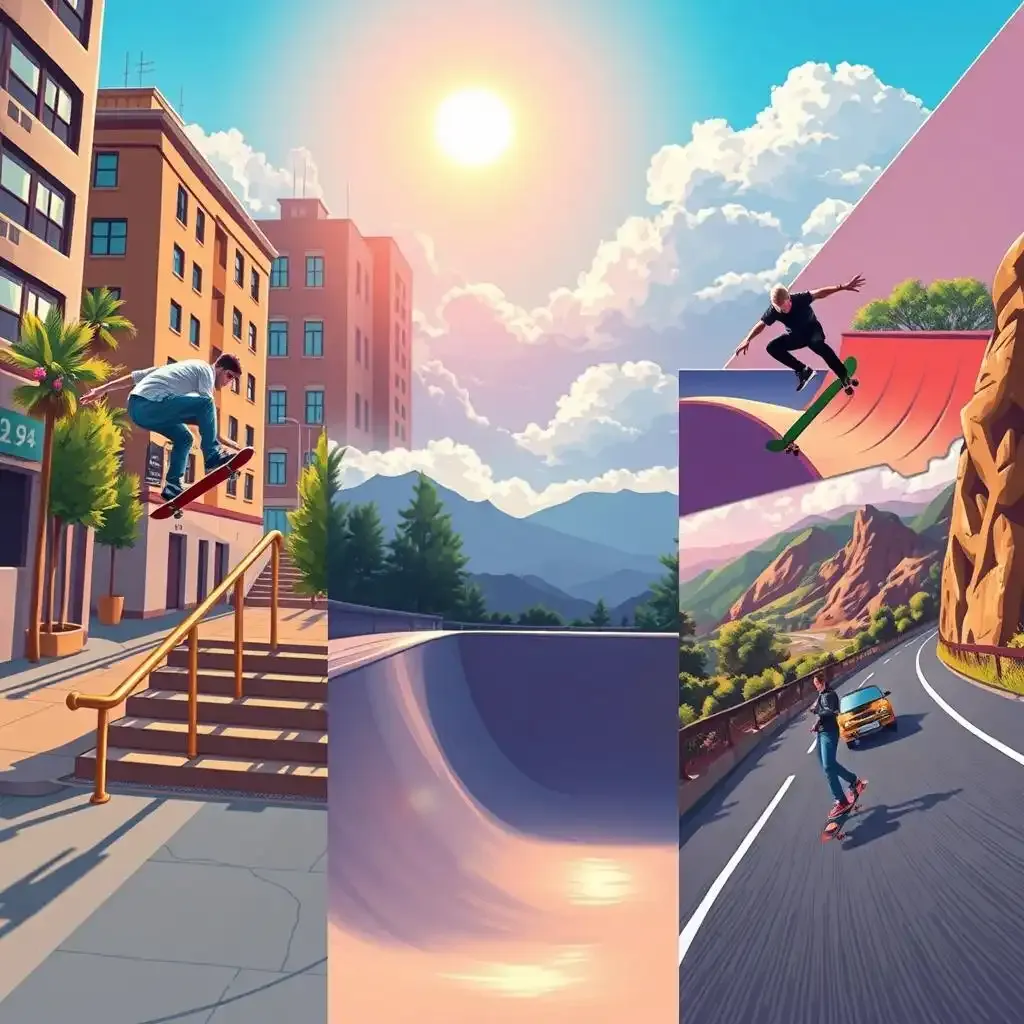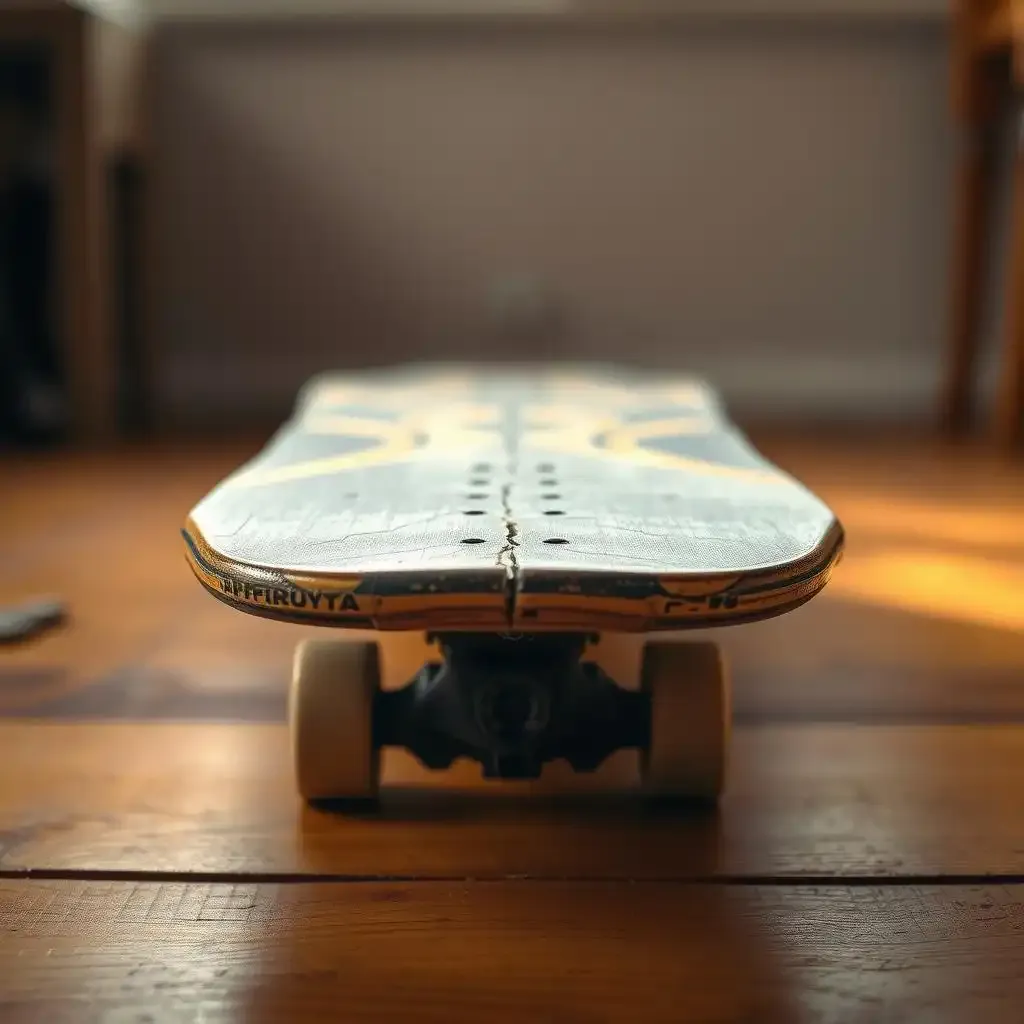Table of Contents
Skateboarding looks super cool, right? It is! And guess what? Anyone can learn to ride and do awesome tricks. But before you start picturing yourself flying through the air, you need the right tools. And the most important tool? Your deck skateboard.
Key Takeaway | Description |
|---|---|
Deck Size Matters | Width and length affect control and stability. Choose based on shoe size and skating style. Wider decks are stable, narrower decks are easier to flip. |
Shape and Concave | Popsicle shapes are standard, shaped decks are for cruising. Concave affects foot grip and trick performance. |
Materials and Construction | 7-ply maple is standard. Look for quality brands for durability and pop. Some decks use carbon fiber for extra strength. |
Skate Style and Deck Choice | Street skating favors lighter, responsive decks. Park and vert skating might need wider, more stable decks. Cruising and downhill can use shaped or longboard-style decks. |
Maintenance is Key | Check for cracks and wear. Replace your deck when it loses pop or becomes damaged. Keep it dry to prevent warping. |
Brands Matter | Reputable skateboard brands offer quality and support the skateboarding community. Consider brands like Skatedeluxe and Mantis Lifestore for options. |
Understanding Your Deck Skateboard: Size, Shape, and What it's Made Of
Deck Size: Finding Your Perfect Fit
Ever tried wearing shoes that are way too big or too small? It's super awkward, right? The same goes for your skateboard deck! The size of your deck really matters. It's like picking out your shoe size, but for your feet to stand on while you roll around and try awesome tricks. Think of your deck as the stage for all your skateboarding adventures. If it's too tiny, you'll feel cramped, like trying to do a dance on a postage stamp. Too big, and it's like trying to control a giant surfboard on land – not so easy to flip or turn quickly. You want a deck that feels just right, like it's made just for you.
Deck width is usually measured in inches, and it ranges from around 7.5 inches to 9 inches or even wider. If you have smaller feet, a narrower deck might be easier to control. If you've got bigger feet, or if you want to feel more stable, especially when you're just starting out, a wider deck could be your best friend. It’s all about finding that sweet spot where you feel balanced and in control. Just like how snowboarders need the right board size to carve down the mountain, skateboarders need the right deck to shred the streets. Learn more about snowboard carving here, and you'll see it's similar to finding the right deck for your skate style!
Deck Shape and Materials: More Than Just a Plank
Now, let's talk shape. Most skateboard decks have what's called a "popsicle" shape. Imagine a popsicle stick – it's kind of flat with rounded ends, right? That's basically the shape of a standard skateboard deck. This shape is awesome because it's super versatile for doing all sorts of tricks, from ollies to kickflips. But, just like there are different flavors of popsicles, there are also different shapes of decks! Some decks are "shaped decks," which means they might have a more old-school look, or a unique outline. These can be really fun for cruising around or skating pools and ramps. It's like choosing between a regular bike and a cool BMX bike – both are bikes, but they feel different and are good for different things.
And what about what decks are made of? Well, most decks are made from maple wood, usually 7 layers of it pressed together. Maple is strong but also has some springiness, which skaters call "pop." Pop is what helps you get your board up in the air to do tricks – it’s like the spring in a trampoline. Some decks might use other materials, like carbon fiber, to make them even stronger or lighter, but good old maple is the classic for a reason. It’s tough, reliable, and gives you that essential pop for your skating adventures. Just like snowboard boards use different materials for different snow conditions, skateboard decks use maple for the best street and park performance.
Choosing the Best Deck Skateboard for Different Skate Styles
Choosing The Best Deck Skateboard For Different Skate Styles
Street Skating: Light and Quick Decks
so you wanna be a street skater? Cool! Street skating is all about doing tricks on stairs, rails, and anything else you find in the city that looks skateable. For street, you want a deck that's like a ninja – light and quick. Think of it like this: if your deck is too heavy, trying to do a kickflip is like trying to jump while wearing boots filled with cement. Not gonna happen easily, right? You need a deck that's easy to flick around and control when you're trying to nail those flip tricks. A narrower deck, maybe around 7.75 to 8.25 inches wide, is usually the go-to for street. It's easier to manage and flip, which is exactly what you need when you are learning how to do a snowboard slide on concrete instead of snow!
Park and Vert Skating: Stable and Strong Decks
Now, if you're dreaming of flying high in skateparks or tackling vert ramps – those giant halfpipes that look like roller coasters for skateboards – you're gonna need a different kind of deck. Park and vert skating are all about speed, big air, and landing tricks on ramps and transitions. For this, you want a deck that's stable and strong, like a tank. Imagine trying to ride a rollercoaster in a tiny car – scary, right? You want something solid under your feet when you're dropping into a ramp or carving around a bowl. Wider decks, like 8.25 inches and up, are your friends here. They give you more landing space and stability, which is super important when you're trying to learn how to train like a snowboarder but on wheels. Plus, park decks are often made a bit tougher to handle the extra impact from big landings.
Cruising and Downhill: Smooth and Steady Decks
Maybe you're not so into tricks and jumps, and you just want to cruise around, feel the wind in your hair, or even bomb down some hills (safely, of course!). For cruising and downhill, you're looking for a deck that's smooth and steady, like a comfy old Cadillac. Think of it as the difference between a race car and a comfy road trip car. You wouldn't want to take a race car on a long, chill drive, would you? For cruising, you might even consider a shaped deck or even a longboard-style deck. These decks are often longer and sometimes wider, giving you a super stable ride and making it easier to carve and turn smoothly, just like you would when you try to do a snowboard carve down a mountain. They're designed for comfort and flow, not necessarily for ollies and kickflips. So, if you're all about enjoying the ride and less about the crazy tricks, a cruising deck is your perfect match.
Keeping Your Deck Skateboard Rolling: Maintenance and Replacement
Keeping Your Deck Skateboard Rolling Maintenance And Replacement
Checking for Wear and Tear
Think of your deck skateboard like your shoes. You wear them every day, they get a bit beat up, right? Same thing happens to your deck! After you've been skating for a while, doing ollies and trying to learn how to do a snowboard grab, you need to check your deck for boo-boos. Look closely at the edges, especially the nose (front) and tail (back). See any cracks? Those are like little warning signs that your deck is getting tired. Also, feel the pop! Remember pop? It's that springy feeling that helps you get air. If your deck feels flat and doesn't bounce back like it used to, it might be losing its mojo. It's like when your favorite bouncy ball stops bouncing so high - sad, but true.
Another thing to check is for delamination. That's a fancy word for when the layers of wood in your deck start to come apart. It usually happens on the sides. If you see layers peeling away, it's not a good sign. It's like a sandwich falling apart - messy and not very strong. Keep an eye on these things, and your deck will thank you. Knowing what to look for will help you keep your ride smooth and safe, just like knowing how to get started snowboarding as a beginner helps you stay safe on the slopes.
Time to Say Goodbye?
so you've checked your deck, and it's looking a bit rough. Cracks, no pop, maybe even some delamination. When do you say "bye-bye" and get a new one? Well, it's not like a banana that goes brown overnight. It's more gradual. If the cracks are small and just on the surface, you might be okay for a bit longer. But if they're deep, like you can stick your fingernail in them, it's time to think about a replacement. Imagine trying to do a snowboard spin with a broken board – not fun, and kinda dangerous! A super worn-out deck can snap when you least expect it, and that can lead to a fall.
Think of it like this:
When your deck loses its pop, it's also a good hint. No pop means tricks are harder, and skating just isn't as fun. If you are constantly battling your board, instead of enjoying the ride, it’s time for an upgrade. Getting a new deck is like getting fresh tires on a race car - suddenly everything feels faster and smoother. So, keep an eye on your trusty plank, and don't be afraid to treat yourself to a new one when the time is right. It will make all the difference in your skating adventures. And hey, while you're at it, maybe think about getting some cool snowboarding gifts to celebrate your awesome skating skills!
Rolling into the Sunset: Your Deck Skateboard Trip
So, you've reached the end of our deck skateboard deep examine. Hopefully, now you know a whole lot more than you did at the start. Picking the right deck isn't just about grabbing the coolest looking one off the shelf. It's about understanding what you need for your style of skating and making sure it fits you just right.
Remember, a skateboard deck is like your trusty sidekick in the skate park or on the streets. Treat it well, keep an eye on wear and tear, and don't be afraid to ask questions at your local skate shop. They are usually filled with skaters who love to share their knowledge.
Now that you're armed with deck knowledge, it's time to put it to good use. Get out there, find that perfect deck skateboard, and start shredding. The world of skateboarding is waiting for you. Go have some fun and maybe, just maybe, land that kickflip you've been working on. Happy skating!